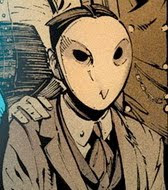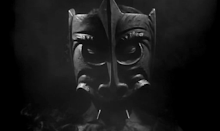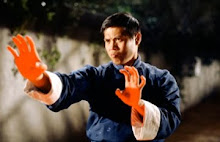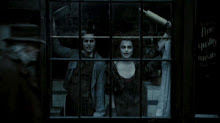
The Red Shoes is a movie about creation and obsession and the fine line between the two. It is, for my money, one of the most sensual movies ever made.
I would not be the first to call The Red Shoes a dream like movie. But what is often missed is how it is dreamlike. We are not speaking here of Carollian dream logic, and visual whimsy. But a dark and powerful undercurrent unable to be articulated except in images and symbols.
This is aided by Jack Cardiff, one of the greatest cinematographer’s of all time. The film as you will see was shot in three strip Technicolor. One of the most beautiful film stocks ever used, which to the feeling of dreamlike intensity that pervades the film. A feeling and technique that reaches its dizzying pitch at the ballet at the center of the film. A masterful sequence that we’ll discuss in more depth tomorrow.
It would be easy for the film’s overwhelming beauty and style to overpower the film, luckily the film has the strength both thematically and narratively to match the images.
It is no mistake that the film’s story, and the ballet the cast performs, is based upon a fairy tale. It is upon that same, primal, nearly mythic level that the story operates.
The story is a simple one, and one could see it, with a slight nudge of tone, easily fitting into an MGM musical with Judy Garland and Mickey Rooney. After all it is at the core, a love triangle between a plucky young musician, a girl he makes a star overnight, and the grumpy ole’ impresario who wants to split them apart.
What makes the movie a masterpiece is that unlike how the above scenario would be handled in America, The nature of the triangle here is not really a romantic or sexual one. At least not for Lermontov, the impresario, and not entirely for Ms. Page, the dancer, either. It’s not a question of love, Lermontov knows he will never create better for anyone else, while Ms. Page knows that no one will ever create better for her. Poor Julian Craster may make her happy, but he will never make her great. The question is which is more important. And the film provides no answer.
Really that is what The Red Shoes is. Nothing less than the greatest movie about artistic creation ever made. About the mania that fuels is, and the sacrifice that it requires. About the differences between those willing to dedicate the full of themselves to the ideal, and those who are merely dabbling. Much has been written about why what happens at the end happens. For me the answer is simple. Like the girl in the fable, she cannot have both the dance and a life. They exclude each other even if one without the other, is not worth it.
Her last desperate act melds the two, if only for a moment.
She is wearing the Red Shoes. What’s more she has chosen to wear them. You tell me if her fate could be any other.





































































































4 comments:
She couldn't have had her guy, and a career too? The other prima ballerina in the flick does, the men don't make such a choice... are great women really that emotionally fragile? I guess the filmmakers didn't sell me she was the type of person who could make that choice and only that choice. The ending fit the fairy tale, but felt artificial (and borderline misogynistic) to the human being.
Yes but the original prima ballerina wasn't great. She was fickle, undevoted, she didn't choose a balance between a personal life and a career she chose a personal life.
You are quite right that it is the men who force the situation into an either or, but quite wrong that her inability to choose has anything to do with gender.
The men do make that choice. Lermetov lives alone in almost a hermit like devotion, separated even from the cast. Everyone else we see, Ljubov, Ratov, Boleslawsky, the entire company is shown no evidence of having lives or families outside of the company. They're devoted to the ballet the way cloistered monks are to religion.
Do you think the string of broken marriages and relationships most creative people have are accidental? It takes a very specific personality type to make everything else secondary.
Yup, artistic types are tough on relationships. And get how that translates in the film to almost all the characters living only for the ballet. That's why the one rogue in the deck, the other ballerina - even if not quite as good - only highlights for me the unsubstantiated (just don't see any reason for Shearer's character to be limited to the choice she makes at the end by what they show of her up to that moment) feels awkwardly (and yeah, in a pissy way) sexist by default. As if I'm supposed to think, "Ah, well, a woman will do that, sure enough!" Not what the filmmakers were after I don't think, but what this viewer was left with. Sigh. The character was, obviously, an awesome talent, as awesome a talent as her male counterparts. Who get to mope when things don't turn out their way, then (in one instance depicted, in another implied) move on with their careers. She had no option like that? Really? I call BS! Not that people can't be like that, but Shearer's character seemed very adaptable throughout the film, and I felt completely hornswaggled by her final "choice," which felt tacked on to fit the fairy tale. Anyway, more 2 cents.
This movie is as close to perfect as it gets.
" The film as you will see was shot in three strip Technicolor. One of the most beautiful film stocks ever used, which to the feeling of dreamlike intensity that pervades the film. A feeling and technique that reaches its dizzying pitch at the ballet at the center of the film."
Watching it again, the drop-deadest beautiful moment is during the ballet, when she is slowed down by the camera as the color transparencies fall all around her-magic.
I also don't feel that it was misogynistic, even if the Diaghilev-like impressario was a controlling asshole--she WANTED to be great, to be true to herself and he wanted her to be great too. But maybe being older, he understood that she couldn't have it all.
Though the ending always upsets me, I love The Red Shoes--it's up there with The Wizard Of Oz in my opinion.
Thanks for the great write-up Bryce!
Post a Comment